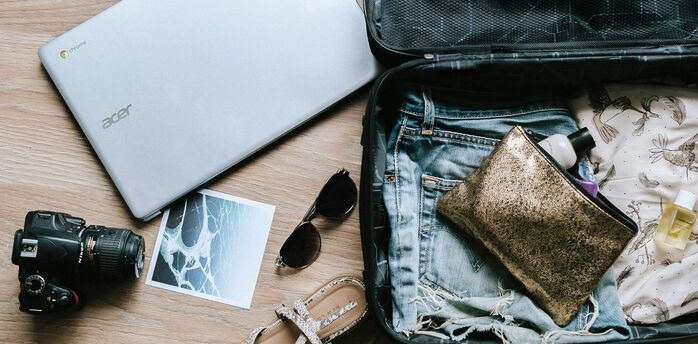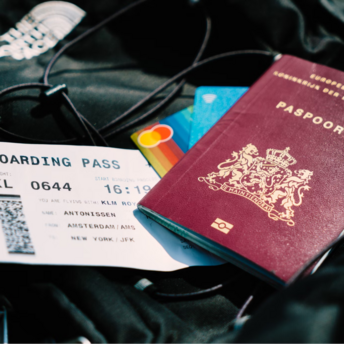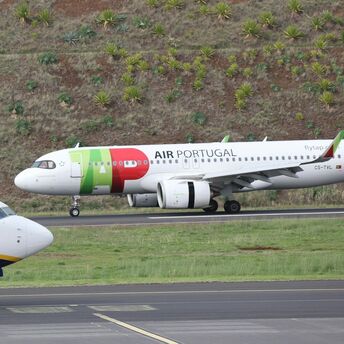Annapurna Base Camp Trek (ABC Trekking): Do It Yourself Guide

This is the right time to visit Nepal. After the earthquake in April 2015, Nepal was devastated. One of the ways you can help the country is by visiting Nepal. Tourism is the largest industry in Nepal. Most of the visitors come for nature and adventure tourism, including me. I happily spent my money trekking around the country.
Trekking Annapurna Base Camp has been on my ‘to do’ list since forever (I’ll tell you the story in my next post). We were excited to visit Nepal for the first time and curious about what it would be like after the massive earthquake. We spent around 3 week-ish in Nepal, which besides doing the ABC trekking, we spent in Pokhara, Kathmandu, Lumbini and also Chitwan (where we met rhinos!).
I did the trekking on September 2016, so I am trying my best to remember and write down everything that you need to know to arrange ABC trekking by yourself. Please keep in mind that I did the trek with Nico, so two of us, without a guide and a porter. The weather was great (I am so bad in dealing with cold weather, so yes, I chose the to trek when it was not too cold). Well it rained a bit during the trek.
In this guide I’ll cover information about documents, fitness level, budget, route, things to pack and some tips. I hope you find this article useful. Let’s start!
Documents
Keep in mind that you need two permits for the Annapurna Base Camp Trek.
(1) ACAP (Annapurna Conservation Area). Cost: 2,000 Rupees
(2) TIMS (Trekkers’ Information Management System). Cost: 2,000 Rupees
Since we were arranging our own trek (without a guide and a porter), got a green TIMS. The green TIMS means Free Individual Trekker (FIT). If you are arranging your trekking with a guide and/or porter, you’ll get a blue TIMS. This is for Group Trekker/s (FT).
You can apply for these permits in Pokhara at the Nepal Tourism Board, Tourist Service Centre, Pardi Damside (for Annapurna only). The office is closed on Saturday. You can submit your application from Sunday to Friday except on public holidays. The opening times are 9 am to 4-5 pm.
I asked my guesthouse to take care my permit, but I am sure you can take care of it easily by yourself. It cost us an extra cost 500 rupees per person (around 4.5 USD) for this. I read that the application process is 20-45 minutes.
Things that you need to prepare:
- 2 passport photos
- 1 copy of your passport
- Fill in the form
- Insurance (though it is not mandatory)
- Permit cost
You have to bring these two permits for the hike. It’s a good idea to pack it in a place that it’s easy to get to. There are two checkpoints where you’ll need to provide your permits (one in Birethanti and the other one in Chomrong).
Fitness Level
You don’t need to be a fitness freak to do the Annapurna Base Camp trek. My fitness level was about right for the trek. I’m sure I could have been a bit healthier (but who couldn’t?). So how fit am I?
I love to trek, but I’m not super fit. Once in a while I climb a volcano, or cross country hiking. I don’t do routine cardio exercises, but I love to walk. For example, in Sri Lanka I was walking 6-7 km a day to cafés, or walking along the beach for around 3-4 km.
If you never do any sport and you don’t like to walk, I would recommend doing routine exercise before attempting to the ABC trek. I don’t particularly think that the Annapurna Base Camp trek is hard, but it requires stamina. If you are reasonably fit, you should be ok.
Hiring Guides and Porters
Sorry! I didn’t hire a guide or porter so this information is second hand. Based on my research the cost of a guide/ porter ranges between $15-$25 a day. There’s some room to negotiate the cost (of course it’s cheaper if you hire the guide directly and cut out the cost of the agency).
I’ve heard if you do hire a porter or guide you should pay them half before the trek and half at the end. It seems like sensible advice, though I’m sure it’s safe to pay 100% in advance if you book your guide through a reliable travel company.
Accommodation
There are lodges where you can stay all the way along the route of the Annapurna Base Camp trek. The higher you go along the route the more basic the lodges are. Yet everywhere I stayed the beds were comfortable, the rooms were clean and the atmosphere was relaxed. And accommodation is cheap…
I was so shocked when I asked how much the accommodation cost on our first night in Gangtok. It was 300 Nepalese Rupees per room per night (for 2 people) and 180 Nepalese Rupees for a single traveller (in a dorm). So freaking cheap! Btw, maybe it is due to the low season too. The rate is more expensive (but not much) in the high season.
My favourite lodge was in Chomrong. The view from the window of our room was just amazing! Unfortunately I can’t remember the name of the lodge. Still, most of the lodges in Chomrong have the same view so don’t worry.
Room per night: NPR 300 = IDR 36,600 = USD 2.7
Food and Drinks
While the accommodation is freaking cheap, the food is somewhat expensive. It gets more and more expensive the higher the altitude. For example: vegetable fried noodle is 350 rupees. And the price went up by 50-100 rupees per 1,000-meter elevation.
For drink we carried a water bottle. It cost around 80-150 rupees to refill 1 liter of water. We didn’t bring any water purifier, but you can get it easily get some at Pokhara if you want it.
Given the cost of food I’d recommend stocking up at the local shops before you start the trek. Things like chocolate bars are a lot lot cheaper in town than they are on the top of the mountain. Otherwise you should be fine as the food was always filling and tasty.
Mineral water refill (1 liter): NPR 100 = IDR 12,200 = USD 0.9
Transport
We got a taxi from Pokhara to Naya Pul (to start the trek). It cost us 1,500 rupees each way. If you don’t want to hire a taxi you can get a bus. We get a bus on the way back, from Siwai back to Pokhara, it was 250 rupees per person. From Pokhara bus stop, we shared a taxi with a Korean trekker, it cost us around 400-500 rupees into town.
Annapurna Base Camp Trek Route
Once you get a map it is really easy to decide the route that you would like to do. We had a rough idea of the route we wanted to take, but the map and also the boards that we found near the lodges helped (“from here to here takes this many hours”).
Looking back we were a lot faster than we planned. After a few days of hiking our endurance increased. Yet you should always listen to your body and know your limits… You can check the elevation here.
Yes, push your limits to do more than you can achieve, but also know when to stop and take a rest. Especially starting from Himalaya to ABC. Also beware of Altitude Sickness or Acute Mountain Sickness (AMS). Know the symptoms and always take it easy when you feel like you need a rest. If you need to go down from a certain altitude until you feel better then please do so.
This was our route and timetable:
My Packing List
Since I decided not to use a porter I needed to make sure that I travelled light. I brought only the essentials that I needed for 7 days (that I could easily carry). Below are the essential things I recommend you bring for the trek.
- After sun and sunblock
- Trekking pole (this was so useful for the way down. You can rent them in town).
- Small medical kit (band aids, paracetamol, etc) + 1 roll dry tissue and 1 pack of wet tissue
- Headlamp (probably not essential, but it’s good to have a light just in case)
- 3 days worth of clothes and warm jacket or lots of layers.
I was wearing: a t-shirt + trekking pants + underwear set + socks + running shoes. Check my complete packing list here.
Summary of Costs
In total we did the Annapurna Base Camp Trek for six days. Including food and accommodation we spent an average of Rupees 2,788 per day (breakdown is here). This is for two people and total costs (plus transport and permit) was Rupees 28,080.
Total budget: NPR 28,080 = IDR 3,430,000 = USD 257
Daily trekking budget: NPR 2,788 = IDR 340,500 = USD 25.5
The budget is based on 2 people travelling during the low season.
Tips & Info
Ok, now this section is dedicated for several random things that I learned during the trek. Hopefully it can help you plan your Annapurna Base Camp Trek.
- Even if you trek by yourself, never ever be alone during the walk. While the trek is not particularly challenging, there a small slip and a twisted ankle could quickly turn from a minor inconvenience to a serious problem. Don’t worry, there were lots of other trekkers on the route. So get to know them, say hi and walk together.
- I never bothered to trek with a trekking pole, but I decided to rent one in Pokhara. I’m really grateful that I did. During the trek, there were a lot of stairs. The trekking pole really saved my knee! I only used the one pole, but you could rent two.
- If you want to buy gear for the trek I recommend you buy it in Kathmandu. There are more shops (like dry fit shirt or trekking pants or socks and things like that). If you want to rent stuff it is better to get it in Pokhara (like trekking pole, sleeping bags etc.).
- We always started early so we could finish early. You don’t want to get stuck out on the path after dark!
- The lodge usually charges you 100 rupees for a hot water shower, which I think is a bit silly. They also charge you for charging things (like phone, camera battery and etc). I always asked them to waive the charge as I paid for the lodge and was eat at their place. They always waived the fee.
- After Deurali to ABC, the trek is relatively easy (not so many tortures from stone stairs), but there is the chance of an avalanche. Pay attention and make sure to move as quickly as possible if there’s a danger.
- The most dangerous part that I can remember is a small waterfall, but relatively wide (you’ll see a lot of waterfalls during the trek) that is located after Himalaya village (I hope I remember it right!). You have to slide down a rock face after crossing the falls. Be really careful. The water from the river makes the stone slippery. I’d recommend climbing down far away from the waterfall.
- Girls, dry and wet tissues are your best friends. Make sure you carry some with you.
- The only thing that I regret is not bringing more socks. I really wish I carried 1 more pair of socks (preferably warm socks) for keeping me warm during the night. I wore a pair of socks for sleep but it was not enough.
- If possible, choose the lodge that turn on their heater at the restaurant for free. Some lodges charge per person for the heater, which doesn’t really make sense. When we were at Himalaya village, our lodge owner was kind enough to keep the heater on all night so we could dry our clothes. The best thing ever!
I hope I covered most things you should know for your ABC trekking preparation. If you have any questions, let me know in comment below. I’ll try my best to answer them for you (and update the article too if needed).
Last, don’t forget to have fun. Enjoy the connection with nature! Annapurna Base Camp trekking is definitely one of my travel highlights.




















